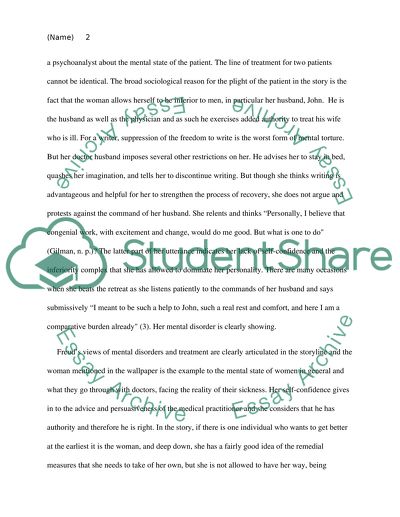Cite this document
(“How did Freuds views of mental disorders and treatment revolutionize Essay”, n.d.)
How did Freuds views of mental disorders and treatment revolutionize Essay. Retrieved from https://studentshare.org/literature/1622108-how-did-freuds-views-of-mental-disorders-and-treatment-revolutionize-early-20th-century-views-as-presented-in-the-short-story-the-yellow-wallpaper
How did Freuds views of mental disorders and treatment revolutionize Essay. Retrieved from https://studentshare.org/literature/1622108-how-did-freuds-views-of-mental-disorders-and-treatment-revolutionize-early-20th-century-views-as-presented-in-the-short-story-the-yellow-wallpaper
(How Did Freuds Views of Mental Disorders and Treatment Revolutionize Essay)
How Did Freuds Views of Mental Disorders and Treatment Revolutionize Essay. https://studentshare.org/literature/1622108-how-did-freuds-views-of-mental-disorders-and-treatment-revolutionize-early-20th-century-views-as-presented-in-the-short-story-the-yellow-wallpaper.
How Did Freuds Views of Mental Disorders and Treatment Revolutionize Essay. https://studentshare.org/literature/1622108-how-did-freuds-views-of-mental-disorders-and-treatment-revolutionize-early-20th-century-views-as-presented-in-the-short-story-the-yellow-wallpaper.
“How Did Freuds Views of Mental Disorders and Treatment Revolutionize Essay”, n.d. https://studentshare.org/literature/1622108-how-did-freuds-views-of-mental-disorders-and-treatment-revolutionize-early-20th-century-views-as-presented-in-the-short-story-the-yellow-wallpaper.


